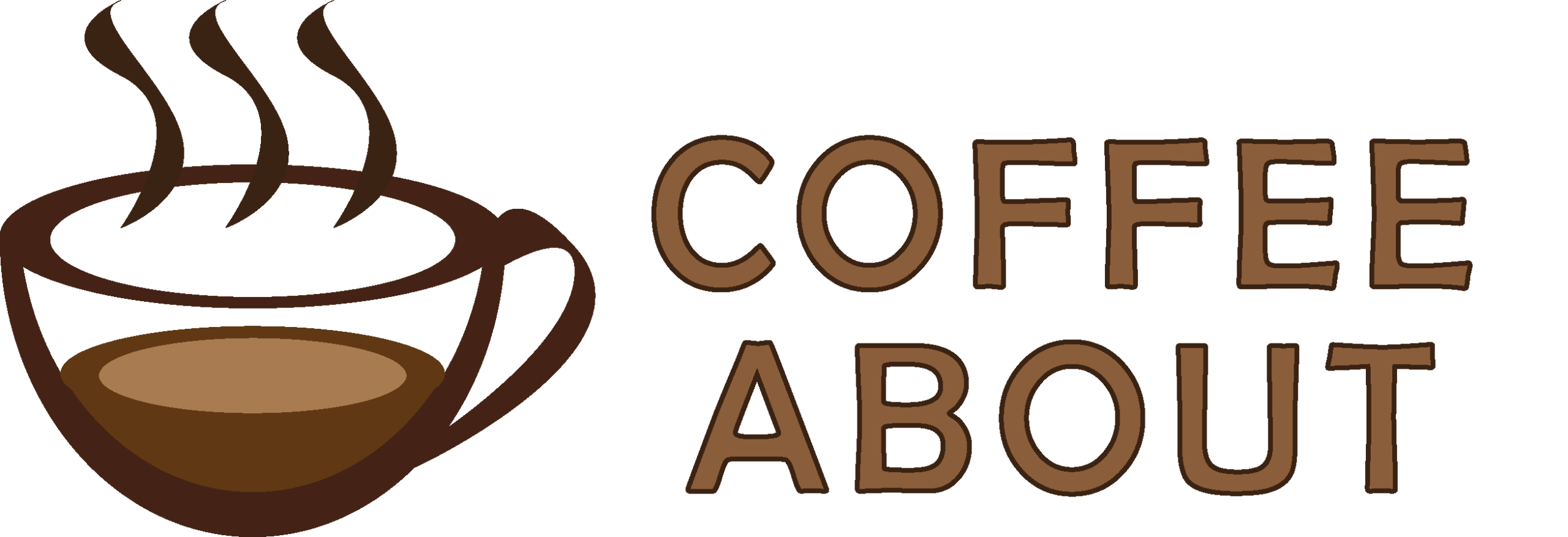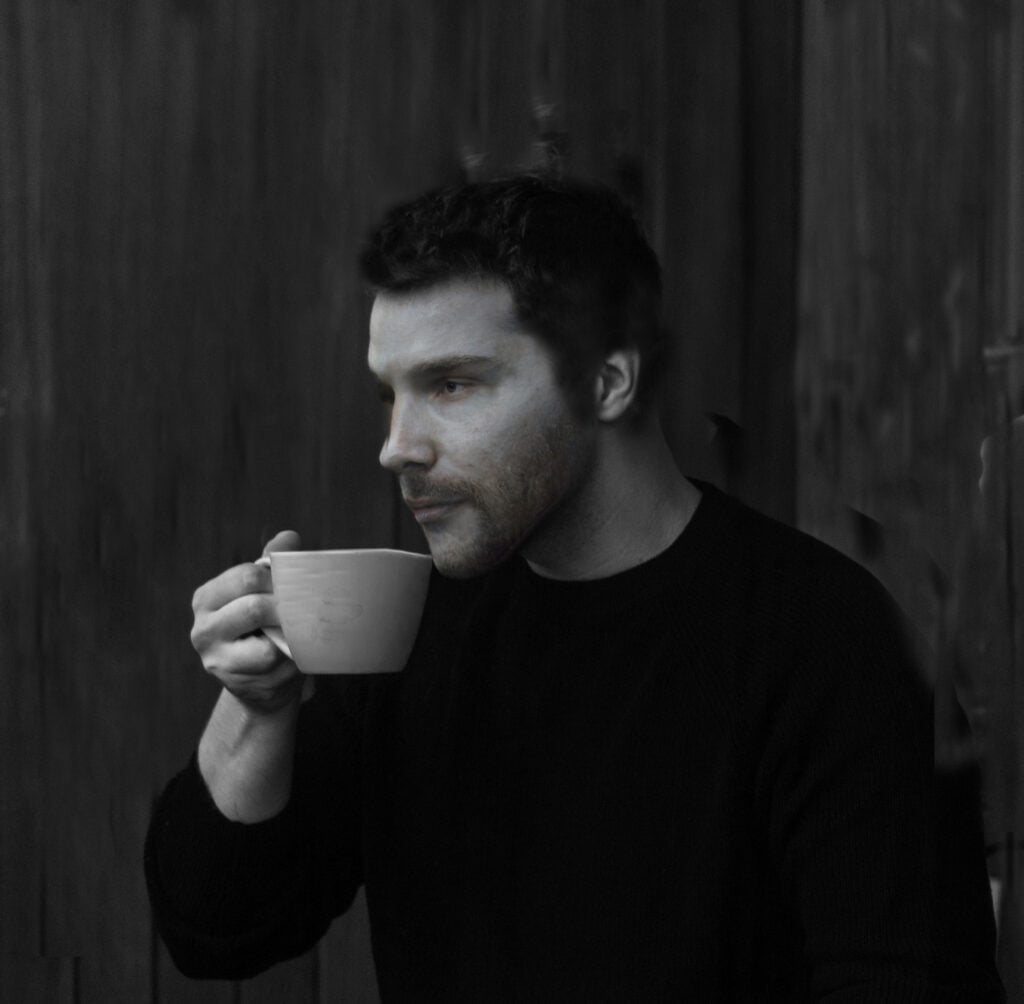Coffee lovers are always on the hunt for the perfect cup of Joe. And when it comes to choosing between a Moka Pot vs Espresso machine, the debate gets intense.
While both Moka Pot and Espresso machines produce strong, flavorful coffee, the brewing process and resulting taste profiles are different.
Key Takeaways
- Moka pot coffee is strong but doesn’t have the same intensity as espresso
- Espresso has a thicker, creamier texture with a crema layer
- Moka pot only brews at the steam pressure of 1.5-2 bars so it doesn’t classify as true espresso
- Moka pots are simple to use while espresso machines require more skill
- Moka pots are very affordable compared to Espresso machines
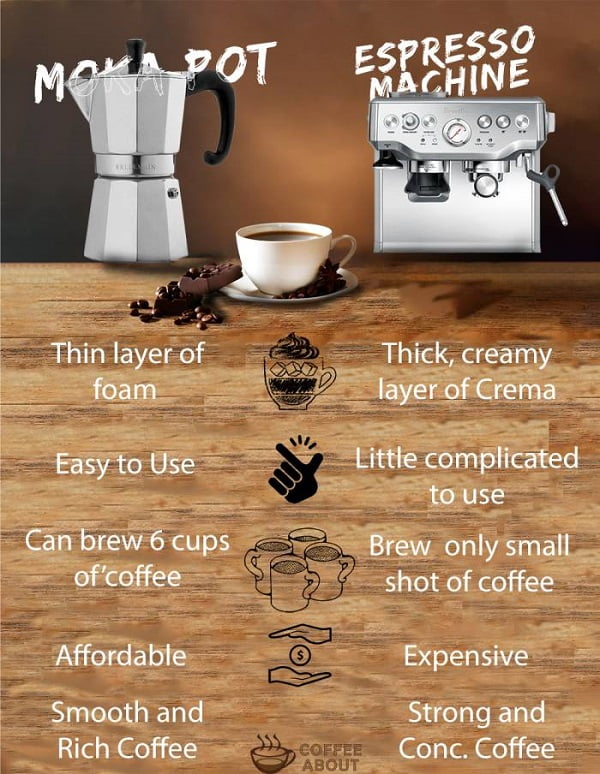
First of all, does Moka pot make real Espresso?
No, Moka Pot doesn’t make real espresso with a thick body and crema layer but it gets surprisingly close. Moka pot typically operates at a pressure of around 1.5-2 bars, which is much lower than the pressure used in an espresso machine so it won’t classify as true Espresso.
Espresso sot is typically brewed at a high pressure of 9 bars. This high pressure is required to extract the rich flavor and oils from the coffee grounds and create the signature crema layer on top.
The following is the Speciality Coffee Association’s definition of Espresso, and Moka pot coffee definitely does not meet it.
“Espresso is a 25–35ml (.85–1.2 ounce [×2 for double]) beverage prepared from 7–9 grams (14–18 grams for a double) of coffee through which clean water of 195°–205°F (90.5°–96.1°C) has been forced at 9–10 atmospheres of pressure, and where the grind of the coffee is such that the brew time is 20–30 seconds. While brewing, the flow of espresso will appear to have the viscosity of warm honey and the resulting beverage will exhibit a thick, dark golden crema. Espresso should be prepared specifically for and immediately served to its intended consumer.”
Speciality Coffee Association
What is the Moka Pot coffee maker?
Moka pot, also known as a stovetop espresso maker or Bialetti is a traditional Italian coffee brewing method that has been popular for decades. It is a simple and affordable alternative to an espresso machine that produces a very strong coffee drink similar to espresso.
The Moka pot consists of three parts: the bottom chamber, the filter basket, and the top chamber.

How Does Moka Pot Coffee Maker Work?
To make coffee with a Moka pot, you first fill the bottom chamber with water up to the marked line. Next, you insert the filter basket and fill it with coffee grounds. Then you screw on the top chamber, and place the Moka pot on a stove over medium heat.
As the water heats up, it creates pressure that forces the hot water up through the coffee grounds, and into the top chamber.
The coffee brewed in a Moka pot is stronger than a regular drip brewing method. It has rich and concentrated flavors and a subtle aroma that is perfect for coffee lovers who enjoy a strong cup of Joe.
The main disadvantage of Mokapot is that if you don’t know how to use it properly you will easily end up with a very bitter-tasting cup of coffee.
Read a Guide on How to use Moka Pot
What is an Espresso machine?
Espresso machines is a specialized equipment that uses a pump to create high pressure of 9-15 bars and push water through the fine coffee grounds. It produces a rich and concentrated small shot of coffee with a crema layer.
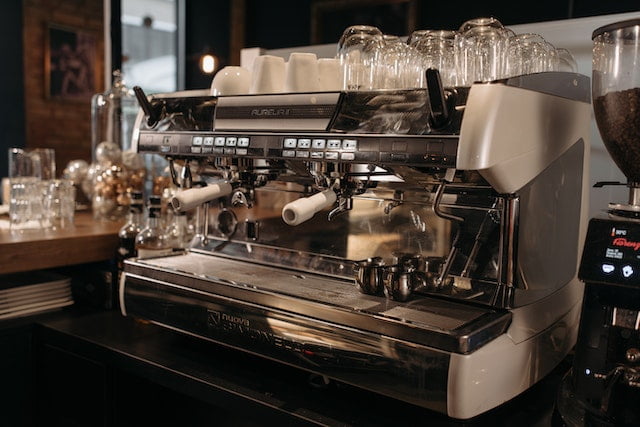
There are different types of espresso makers, including manual lever, semi-automatic, and fully automatic machines.
Manual lever machines require the user to manually control the pressure by pulling a lever, making it a great choice for espresso enthusiasts who enjoy the hands-on approach of making espresso.
Semi-automatic machines require user to control the grind size and yield of espresso shot manually, while fully automatic machines take care of the entire process from grinding the coffee beans to brewing the espresso with just the push of a button.
Investing in a high-quality espresso machine can be expensive, but it can save money in the long run for espresso lovers who would otherwise drink at coffee shops.
The average price of a cappuccino at a coffee shop in the United States is $3.86. Making a cappuccino at home with a high-quality espresso machine can cost as little as $0.50 per cup, depending on the coffee beans used.
National coffee association
Is Moka pot as strong as espresso?
As someone who enjoys both Moka pot and espresso, I can say that they have distinct taste profiles.
While Moka pot coffee is strong and bold, it doesn’t have the same intensity as espresso. Moka pot coffee has a smoother taste with chocolaty notes.
Espresso, on the other hand, is more concentrated and has a stronger, full-bodied taste. It has a thick, creamy texture and a distinct flavor that comes from the crema. The crema adds a layer of richness to the espresso that is not present in Moka pot coffee.
In terms of strength, espresso is definitely stronger than Moka pot coffee. It’s made with a finer grind and higher pressure, which extracts more caffeine and flavor from the beans.
However, if you’re looking for a strong coffee with a unique flavor profile, Moka pot coffee is definitely worth trying.
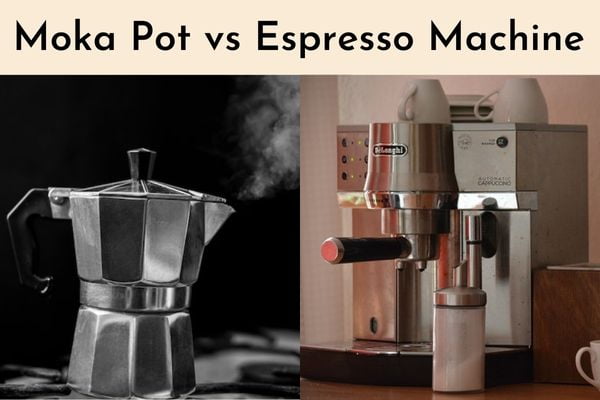
Read a Guide on Different Ways to Make Coffee
Does Moka pot make real Crema?
Although Moka pot coffee can produce a little foamy layer on top of the coffee, it is not the same as an espresso machine’s crema.
This layer is formed by the release of steam from the boiling water, which mixes with the oils in the coffee and creates a layer of bubbles. However, this layer does not have the same depth or richness as espresso crema.
The high-pressure brewing process of espresso machines contributes to the formation of this crema, which is a trademark of espresso.
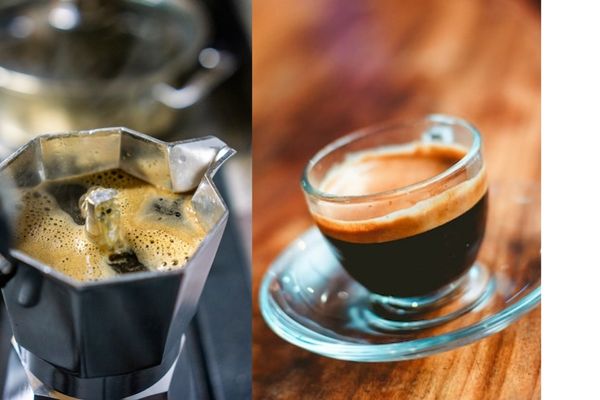
The Ease of Use and Cleaning up
Moka pot is easy to use and clean. It’s a simple, no-fuss method of brewing coffee. While using an espresso machine requires more skill and brewing expertise.
To use a Moka pot, all you need to do is add water to the bottom chamber, place ground coffee in the middle chamber, and heat it on a stove or other heat source. Cleaning up is also straightforward, as you only need to rinse the parts of the Moka pot with warm water and let them dry.
Espresso machines, especially semi-automatic ones, can be more complicated to use, requiring you to adjust the grind size, tamping pressure, extraction time, and dialing in the machine to achieve the perfect shot.
Cleaning can also be more involved, as you need to remove and clean the portafilter, group head, and steam wand regularly.
The brewing time
Moka pot takes longer to brew than an espresso machine. It typically takes between 5-10 minutes to brew a pot of coffee using a Moka pot. Espresso machines, on the other hand, can brew a shot of espresso in as little as 20-30 seconds.
The Versatility
Moka pots offer more flexibility than espresso machines. They can easily brew coffee at a range of strengths by adjusting the amount of grounds and also produce up to 6 cups of strong coffee at once for serving a crowd.
Moka pot with its portable design is also a very good choice for making coffee on camping and hiking trips.
On the other hand, espresso machines offer more versatility in the types of drinks you can make. With an espresso machine, you can pull shots for drinks like lattes, cappuccinos, macchiatos, and americanos. The steam wand also allows you to foam milk for specialty espresso drinks.
The Grind size
The grind size for the Moka pot is coarser than espresso. Espresso requires a very fine grind to ensure proper extraction, while Moka pot needs a slightly coarser grind to prevent the coffee from becoming bitter.
So, you can’t use espresso grinds in a Moka pot unless you want an overwhelmingly bitter cup of coffee.
The Caffeine content
While both Moka pot and espresso are strong coffee drinks, espresso has more caffeine per ounce than Moka pot.
A single shot of espresso (30ml) contains an average of 60-72 mg of caffeine, while a cup of coffee brewed using a Moka pot (60ml) contains an average of 70-80 mg of caffeine.
However, the caffeine content varies greatly depending on the type of coffee beans.
The Budget Factor
Moka pot is a more affordable option than an Espresso machine. On average, Moka pots range in price from $20 to $50, depending on the size and brand. In contrast, Espresso machines are expensive and can cost anywhere from $300 to $3,000, depending on the features and quality.
When it comes to operating costs, Moka pot is also the more budget-friendly option. It requires no electricity or special accessories, and the only ongoing cost is the price of coffee beans. Espresso machines, on the other hand, require special accessories such as a tamper, milk frother, electricity, and cleaning supplies.
So, if you’re on a budget and looking for a simple and affordable method of brewing strong and concentrated espresso-like coffee, the Moka pot is a great option.
Moka Pot Vs Espresso | Which you should choose?
In my experience, I’ve found that both Moka pot and Espresso machines have their own unique benefits. When it comes to ease of use and budget, I find the Moka pot to be more straightforward and easy to clean, making it a convenient option for brewing everyday coffee in a budget-friendly way.
If you’re on a budget and want a simple and easy way to brew coffee, then the Moka pot is a great option. But if you’re willing to spend more money and want to invest in a high-quality machine that produces true espresso, then the Espresso machine might be the best option for you.
So, it’s time to pick your side and enjoy your perfect cup of coffee. As the famous quote by David Lynch goes, “Even a bad cup of coffee is better than no coffee at all.” Happy brewing!
Check out related comparison articles:
